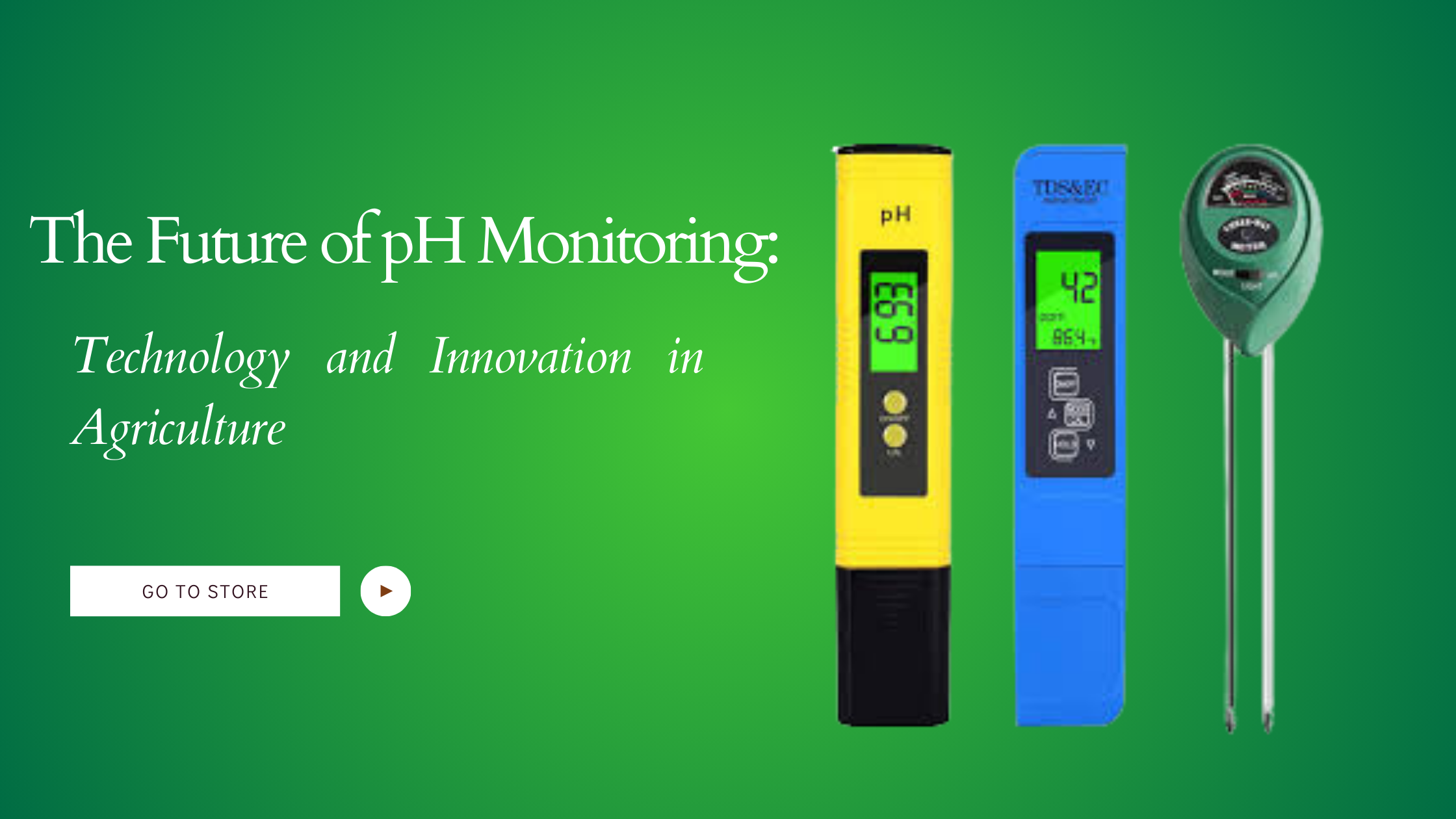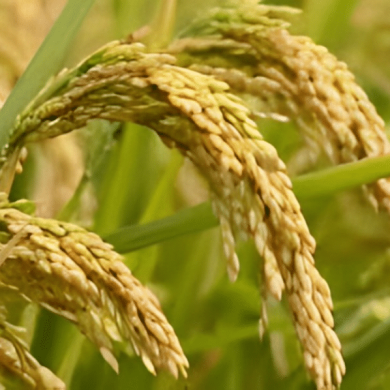The Future of pH Monitoring: Technology and Innovation in Agriculture

Introduction
The Future of pH Monitoring: Technology and Innovation in Agriculture In the ever-evolving landscape of agriculture, precise monitoring of soil and water pH is paramount for optimizing crop yields and ensuring sustainable practices. Traditional methods of pH measurement can be time-consuming and labor-intensive. However, technological advancements are revolutionizing pH meters, paving the way for a more efficient and data-driven approach to agriculture.
The Importance of pH in Agriculture
Soil pH plays a crucial role in plant growth and development. It influences nutrient availability, microbial activity, and overall soil health. Maintaining optimal pH levels is essential for maximizing crop yields and minimizing the environmental impact of agricultural practices.
Challenges of Traditional pH Monitoring
Traditional methods of pH monitoring often involve manual sampling and laboratory analysis, which can be:
Time-consuming: Collecting soil samples, transporting them to a laboratory, and waiting for results can be lengthy.
Labor-intensive: Manual sampling and analysis require significant human effort and can be physically demanding.
Inaccurate: Human error can lead to erroneous readings, affecting the reliability of results.
The Rise of Technology-Driven pH Monitoring
Innovative technologies are being developed to streamline and enhance pH meter in agriculture to address the limitations of traditional methods. These technologies include:
Smart Sensors: Wireless sensors can be embedded in the soil or integrated into irrigation systems to monitor pH levels in real time continuously. Data is transmitted wirelessly to a central platform, allowing farmers to track pH trends and make informed decisions.
Drones and Remote Sensing: Drones equipped with specialized sensors can capture high-resolution images and data of fields, including pH levels. This technology enables precise mapping of pH variations across large areas, facilitating targeted interventions.
Artificial Intelligence (AI) and Machine Learning: AI algorithms can analyze vast amounts of data collected from sensors and remote sensing to identify patterns, predict future pH trends, and optimize fertilizer applications.
Benefits of Technology-Driven pH Monitoring
The adoption of technology-driven pH monitoring offers numerous benefits for farmers, including:
Increased Efficiency: Automation reduces the time and labor required for pH monitoring, allowing farmers to focus on other tasks.
Improved Accuracy: Real-time data and AI-powered analysis provide more accurate and reliable pH readings, minimizing the risk of errors.
Enhanced Decision-Making: Access to real-time data and predictive analytics empowers farmers to make informed decisions about irrigation, fertilization, and other management practices.
Sustainability: Precise pH management can reduce the need for excessive fertilizer applications, minimizing environmental impact and promoting sustainable agriculture.
The Future of pH Monitoring
As technology advances, we can expect even more innovative solutions for pH monitoring in agriculture. Some potential future developments include:
Nanotechnology: The development of nanosensors for highly sensitive and accurate pH measurements.
Blockchain Technology: Secure and transparent data management for pH monitoring and other agricultural data.
Integration with Precision Agriculture: Seamless integration of pH monitoring data with other precision agriculture technologies, such as GPS-guided tractors and variable-rate application systems.
By embracing these technological advancements, farmers can revolutionize their approach to pH management, leading to increased productivity, improved sustainability, and a more prosperous future for agriculture.
Conclusion
The future of pH monitoring in agriculture is bright, with innovative technologies poised to transform the way farmers manage soil and water pH. By leveraging smart sensors, drones, AI, and other cutting-edge solutions, farmers can achieve unprecedented levels of precision and efficiency in their pH management practices, ultimately leading to a more sustainable and productive agricultural sector.
FAQ
1. What is a pH meter and how does it work?
- Definition: A pH meter is an electronic device used to measure the acidity or alkalinity of a solution.
- How it works: It measures the electrical potential difference between a pH electrode and a reference electrode when they are immersed in the solution. This potential difference is directly related to the concentration of hydrogen ions (H+) in the solution, which determines its pH.
2. What are the different types of pH meters available?
- Pen-type pH meters: Compact and portable, ideal for quick spot checks.
- Benchtop pH meters: More accurate and precise, often used in laboratories.
- Waterproof pH meters: Designed for use in wet environments.
- industrial pH meters: Robust and durable, suitable for continuous monitoring in industrial processes.
3. How do I calibrate my pH meter?
Calibration ensures accurate pH readings. The specific steps may vary depending on the model, but generally involve:
- Preparing buffer solutions: Use commercially available buffer solutions with known pH values (e.g., pH 4, 7, 10).
- Immerse the electrode in the first buffer solution.
- Adjust the meter’s calibration setting to match the buffer solution’s pH.
- Rinse the electrode with distilled water.
- Repeat steps 2 and 3 with the second buffer solution.
4. How often should I calibrate my pH meter?
The frequency of calibration depends on factors like usage frequency, storage conditions, and the accuracy required. As a general guideline, calibrate your pH meter:
- Before each use for critical applications.
- At least once a day for frequent use.
- Whenever you suspect inaccurate readings.
5. What are the signs of a faulty pH meter?
- Inaccurate readings: If the meter consistently gives readings that are significantly different from expected values.
- Slow response time: If the meter takes an unusually long time to stabilize on a reading.
- Drifting readings: If the meter’s reading gradually changes even when the solution is stable.
- Calibration problems: If the meter cannot be calibrated properly or the calibration settings do not hold.
6. Why is soil pH important for plant growth?
Soil pH influences:
- Nutrient availability: Different nutrients are most available to plants within specific pH ranges.
- Microbial activity: Soil pH affects the activity of beneficial microorganisms that help plants grow.
- Root growth: Extreme pH levels can inhibit root growth and development.
7. How do I use a pH meter to test soil pH?
- Collect a soil sample: Collect a representative sample from the desired area.
- Prepare a soil slurry: Mix the soil sample with distilled water to create a slurry.
- Calibrate your pH meter.
- Insert the electrode into the slurry.
- Read the pH value displayed on the meter.
8. What is the ideal pH range for different crops?
The ideal pH range varies depending on the crop. Here are some general guidelines:
- Most vegetables: 6.0-7.0
- Most fruits: 6.0-6.5
- Acid-loving plants (e.g., blueberries, azaleas): 4.5-5.5
- Alkaline-loving plants (e.g., alfalfa, spinach): 6.5-7.5
9. How can I adjust soil pH if it’s too high or too low?
- To lower pH (increase acidity): Apply elemental sulfur or aluminum sulfate.
- To raise pH (increase alkalinity): Apply lime (calcium carbonate).
10. What are the benefits of using a pH meter for hydroponics?
In hydroponics, precise pH control is critical for optimal plant growth and nutrient uptake. A pH meter allows you to:
- Monitor pH fluctuations in real time.
- Make adjustments to nutrient solutions as needed.
- Prevent nutrient deficiencies and toxicities.
- Maximize crop yields and quality.
Digital pH Meter (0.01pH Accuracy)
A digital pH Meter (0.01pH Accuracy) is indicated for measuring the activity in water‑based solutions, indicating its acidity or alkalinity expressed as pH (a scale used to specify how acidic or basic a water‑based solution is). Well indicated for water purification systems which require monitoring for acidity and alkalinity levels.





Add comment
You must be logged in to post a comment.